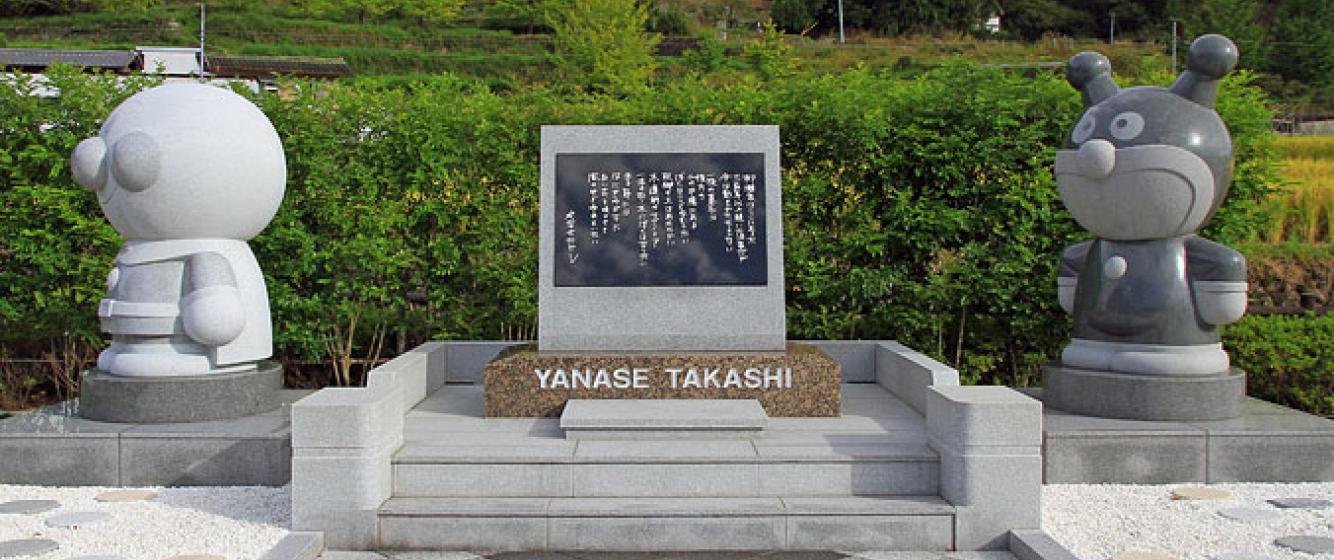
Beyond Anpanman: Understanding Yanase Takashi’s Unlikely Rise to the Pinnacle of the Japanese Popular Culture Pantheon
International tourists in Japan today seem to be most interested in Japan’s food culture. Tako-yaki from Osaka, Okonomiyaki from Hiroshima, and the ubiquitous Nagoya “Morning set” of toast and coffee are the foundations of millions of Instagram reels. Tourists seem to go where social media sends them, and most often, that is streets of food vendors. Anthony Bourdain famously said that Tokyo food culture has it all. Japanese food culture is enjoying a moment.
At the intersection of those food streets and the kitchens and dining rooms that made them is an anime little known outside of Japan. This is Anpanman (Mr. Bean Bun). It eclipses the character count of Pokemon. The characters, most based on the favorite foods of its young target audience, look delicious, and teach children about kindness, working together, and how to eat healthily. It is also a massive popular culture juggernaut, introducing Japanese to manga and anime from a young age, and setting the expectations for an entire viewing public. For that reason, NHK, Japan’s public broadcasting system, will feature it in its newest Asadora, or morning drama, an 8:00 a.m. daily 15-minute hit of compelling, historically based story that traditionally focuses on an important woman.
In April 2025, NHK’s 130-episode morning drama, “Anpan” will tell the fictionalized story of Komatsu Nobu (1918-1993), the wife of the Anpanman cartoon creator Yanase Takashi (1919-2010). Yanase, (played by Kitamura Takumi) is widely acknowledged as one of the most successful children’s manga and picture book illustrators of all time. His manga series is now a $1 billion commercial empire built on character goods of every kind that are as ubiquitous in the Japanese entertainment and marketing media as those of Hello Kitty and Doraemon. In contrast to Yanase, his wife Komatsu Nobu, (played by Imada Mio), is among the least known characters ever to be chosen by the Asadora (morning drama) series. This leaves the writer, Nakazono Miho, with no choice but to build her screenplay around events Nobu’s husband’s life, leading up to his creation of Anpanman (Mr. Bean Bun), a character who flies to the assistance of any hungry person and tears off parts of his face to feed them, in the early 1970s. [PP1]
Yanase, who grew up in Kochi, benefited from an indulgent upbringing by his adopted uncle and aunt following the tragic early death in Shanghai of his highly educated, journalist father. At home, the bookish, but shy teenager enjoyed the work of early manga artists in the magazine Shonen Club, especially Tagawa Suihō’s highly popular Norakuro about a human-like dog. His uncle, a modern and open-minded doctor accepted Yanase’s disinterest in medicine and allowed him to enter Tokyo Higher School of Design, an unusually progressive school, whose teachers encouraged students to spend time enjoying the exciting world of Ginza’s café and movie-based entertainment culture. Yanase also spent time in the used bookstores devouring the early 1930s stories of avant-garde writers Dazai Osamu and Ibuse Masuji while also enjoying movies such as Frankenstein (1933) and Gone with the Wind (1939), both of which would influence his later work.
After graduation, he was drafted into the army and sent to Fuzhou, China (opposite Taiwan) to serve as a propagandist and codebreaker. Because of the U.S. decision to attack Okinawa instead of Taiwan, Yanase would never fire a gun at an enemy, but rather found himself with time to develop his illustration skills entertaining locals and fellow soldiers with self-created Kamishibai picture stories and songs. [PP2] In 1944, however, his regiment was ordered to march on foot to Shanghai, a one-thousand-kilometer journey in which he experienced first hand, the pain of hunger. On his return to Japan in March 1946, Yanase heard confirmation of his missing brother Chihiro’s death[PP3] , leaving him with no close relatives and a sense of deep grief and guilt at surviving the war. His sadness was tempered, however, by a whirlwind romance with his future wife Komatsu Nobu. Nicknamed Hachikin, a Tosa term for a strong or tomboyish woman, Nobu was the only woman at the Kochi Shinbun where he also found a job. A few months later the couple moved to Tokyo where he spent most of the next decade trying to match his pre-war idols as a serious adult manga artist.
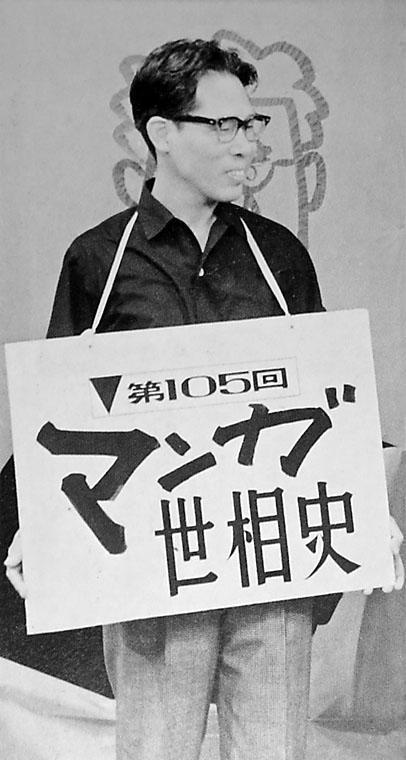
.
Yanase at the time of the opening of Nippon TV (1953)『やなせ・たかしの世界 増補版』サンリオ、1996年7月25日、69頁。ISBN 4-387-96008-6。
With Nobu’s unwavering support and encouragement he managed to make a name for himself as a picture book illustrator and theater play designer. In this capacity, he met music composer Taku Izumi and in 1960 they co-wrote a novelty children’s song "Te no Hira wo Taiyo ni" (Hold Your Hands in the Sun) that made its way to NHK’s Minna no Uta TV show and later become a standard of children’s music books. It is still considered Yanase’s greatest composition alongside his later “Anpanman no Machi” (Anpanman March).
The success of this song later led to an offer to be a manga teacher on NHK’s Manga Gakkō (Manga School), in which Yanase quizzed elementary and middle-school students on their manga knowledge. This in turn led to requests to contribute to the new wave of children’s magazines and his breakthrough success with the Yasashī raion (The Gentle Lion) (1969), later made into an anime. In the same year he produced a series of twelve fairy tale-type short stories for the magazine Kodomo no Ehon. These included the dark Chirin no Suzu (Chirin’s Bell) and a short novelty story called Anpanman. In this early version of Anpanman, the protagonist is portrayed as a chubby old man flying in a damaged superhero cape who gives anpan donuts to children. Yanase later pointed out that while 1940s American comic heroes such as Superman and Spiderman were champions of justice, they mostly showed off their fighting ability without ever getting dirty or helping the weak or hungry[PP4] .
The Anpanman story received little attention until October 1973 when Yanase decided to revive him as the round-faced child-friendly non-human version we know today. The new version featured just two characters, Anpanman and his maker, Jamu Ojīsan (Uncle Jam), a kind old baker and chef. Most critics, librarians, and kindergarten teachers expressed strong reservations about the cruelty of a head being eaten and references to poverty. However, it struck a note with kindergarten children and copies of the book were always checked out of libraries. The key to its mass acceptance as a picture book was the addition of the all-important antihero Baikinman (Mr. Bacteria) whose monomaniacal drive to make a germ-friendly planet, was a perfect fit for preschoolers, especially given Japanese kindergarten teachers' renowned emphasis on hygiene and handwashing for their pupils.
It would be over a decade before Yanase began adding the vast array of other personalities that are now associated with Anpanman, such as Melonpanna, Rollpanna, and Currypanman. In almost every story, Jamu Ojīsan is the epitome of helpfulness and sacrifice, baking an endless supply of new faces for Anpanman following the use of the latter’s head for feeding the hungry or its disintegration due to water attacks by the devious Baikinman. The other key protagonist created at this time is Dokinchan, whose name is based on the onomatopoeia doki doki (heart beating in excitement). Given a very attractive design, Dokinchan’s personality was apparently inspired by Scarlett Ohara, as portrayed by Vivien Leigh in Gone with the Wind.[PP5]
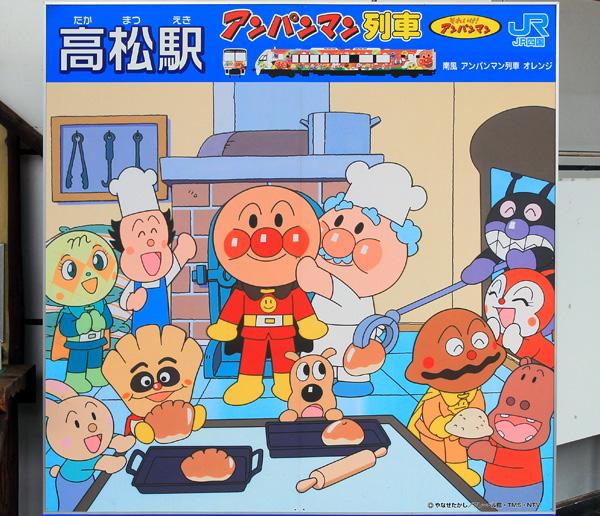
.
Anpanman commemorative photo board installed at Takamatsu Station (Takamatsu City, Kagawa Prefecture). CC 3.0 Public domain 京浜にけ(ファイルの作成者) - 美術著作物の題号:それいけ!アンパンマン 著作者:やなせたかし/フレーベル館・TMS・NTV
In 1988, the success of the book series finally led to an animation series for children’s TV. Coinciding with the national gloominess triggered by the Japanese Emperor’s sickness and the impending end of the Showa era, Soreike! Anpanman reached an unexpectedly high 7% rating in its first month, and the next two years saw it become a national children’s favorite with booming sales of character goods and many movie spinoffs. The recognition and income from the anime allowed Yanase to found and pay for an Anpan museum in his and Nobu’s beloved Kami, Kochi. [PP6] Sadly, however, this success coincided with his hitherto healthy wife’s diagnosis with untreatable pancreatic cancer.
Following the death of Nobu and the passing of Tezuka Osamu in 1989, Yanase took on a role as the wise old manga grandfather of Japan, and in 2009, the Anpanman series entered the Guinness Book of World Records for the largest number of characters in a series, numbering more than 1,700. The peak of Yanase’s saint-like status came two years before his death in the aftermath of the 2011 Great East Japan earthquake and tsunami, when the “Anpanman March” was adopted as a theme song of hope, resilience and reconstruction by the mass media. This prompted the 92-year-old to come out of retirement and create a series of posters encouraging displaced and bereaved victims of the disaster areas. His private funeral two years later in 2013 at age ninety-four was attended by almost all prominent manga artists and many of his show business associates.
Although Yanase does of course have considerable name recognition outside of the Baby Boom demographic, there are many Japanese who cannot connect his name with the Anpanman story. Even fewer, outside his beloved Kochi, are aware of his enormous contribution to Japanese picture book history or know the role of Nobu in his long life’s trajectory. It is fitting therefore that the 2025 Asadora about him and Hachikin Nobu will not only increase the ubiquity and variety of Anpanman merchandise, but also elevate the man who is Japan’s most successful children’s picture book writer to a new level of fame and recognition.
Anpanman itself, at least in anime form, is gaining international markets with its lessons in kindness, teamwork, and good food – universal themes for children around the world. However, with a hero whose superpower is kindness and characters whose Japanese names cannot easily be meaningfully replaced with equivalents in other languages, Anpanman does not translate or glocalize easily. Still, it is likely coming soon to a TV or computer screen near you.
Michael Furmanovsky is a retired Professor of Cultural Studies at Ryukoku University. He has taught classes on American culture and movie history, while also being active in the field of Japanese popular culture. He has written articles on most genres of western popular music in Japan including jazz, country, rockabilly, folk, pop as well as studies of pre- and post-war women's fashion and the Shochiku girls entertainment dance troupes. He can be contacted at mfurmanovsky@gmail.com
Discussion Questions
- Who made Anpanman, and what kind of story is it?
- What good habits does Anpanman teach children?
- Why was Yanase’s career path unexpected?
- Why do you think Anpanman became very popular in Japan?
- Do you know of stories in your country that teach lessons like Anpanman?
- Why tell the story of Yanase’s wife, even though she was not a public figure?
- What does Anpanman's popularity tell us about how everyday ideas can become powerful cultural symbols?
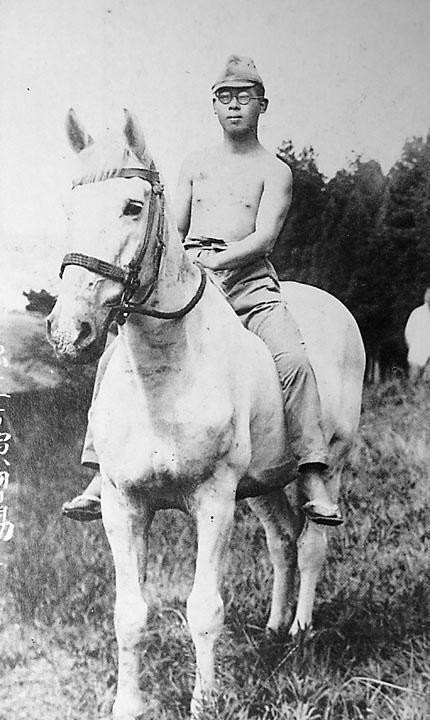
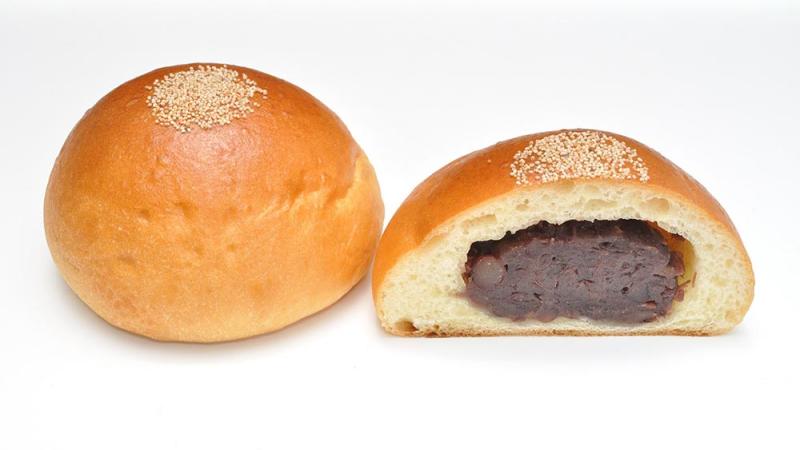
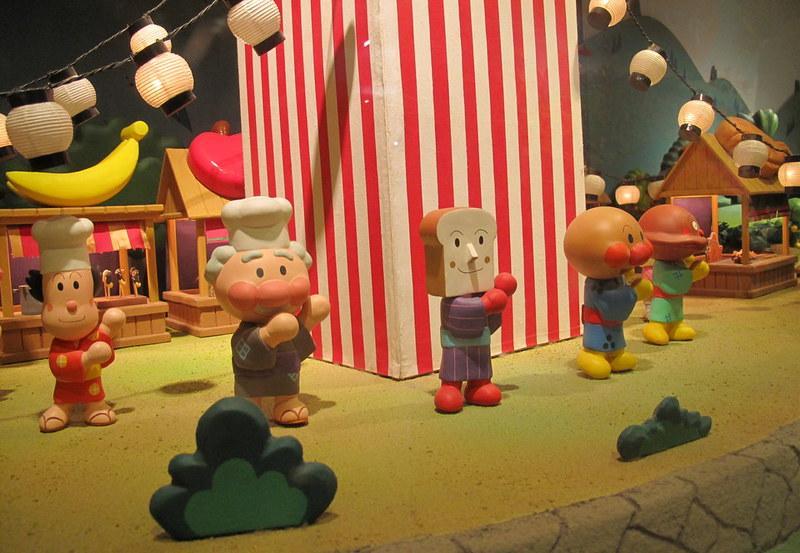
Add new comment